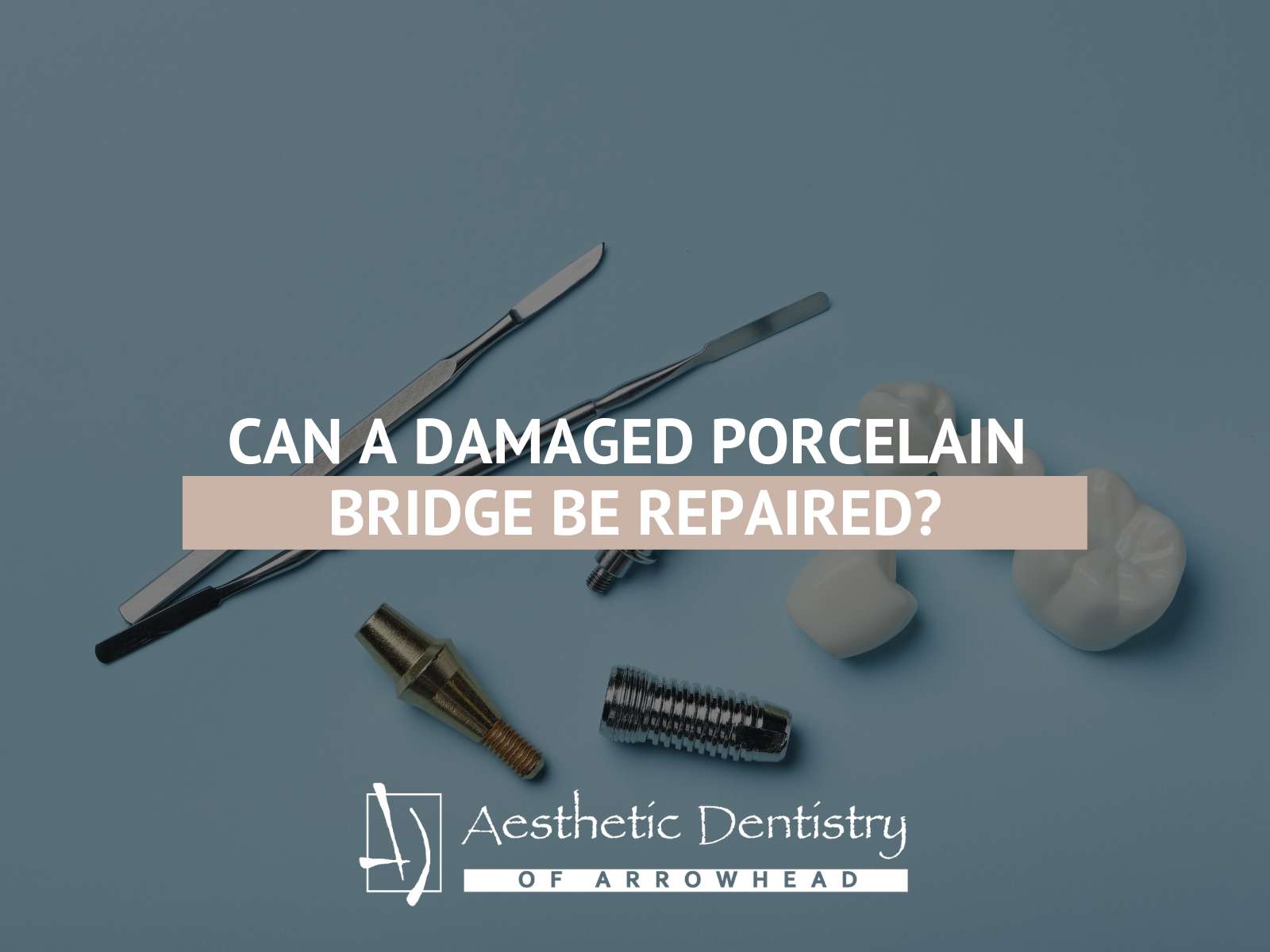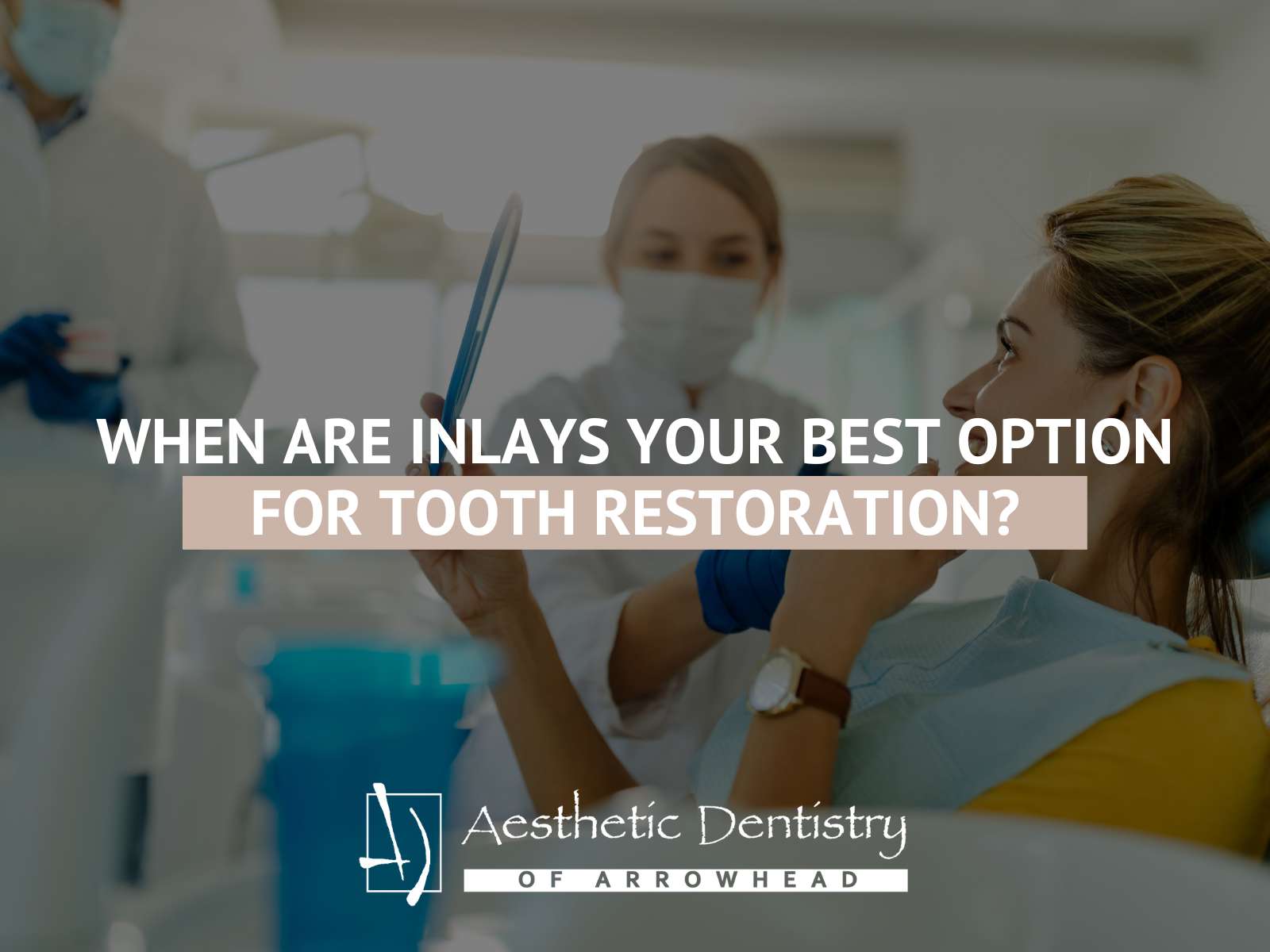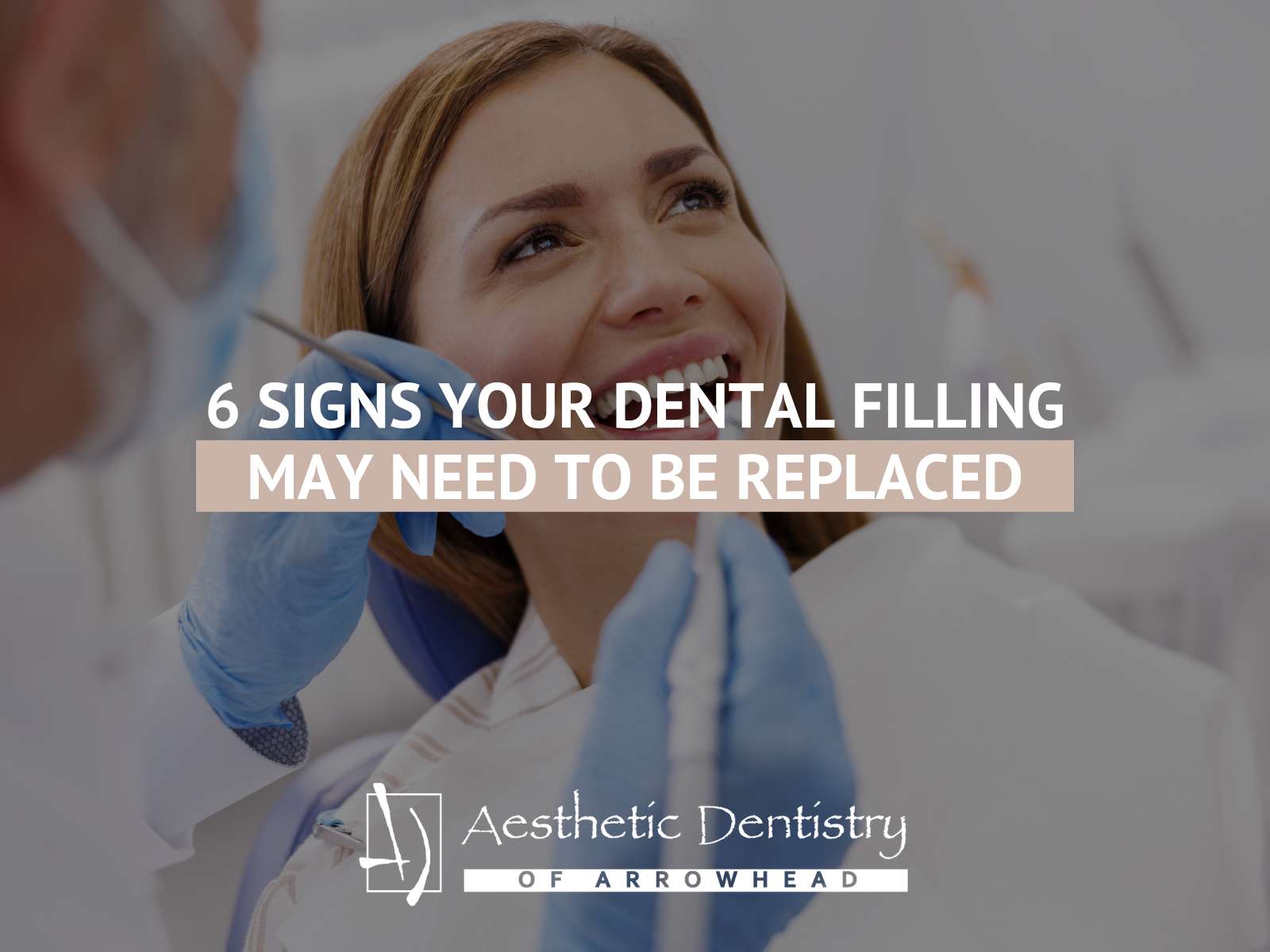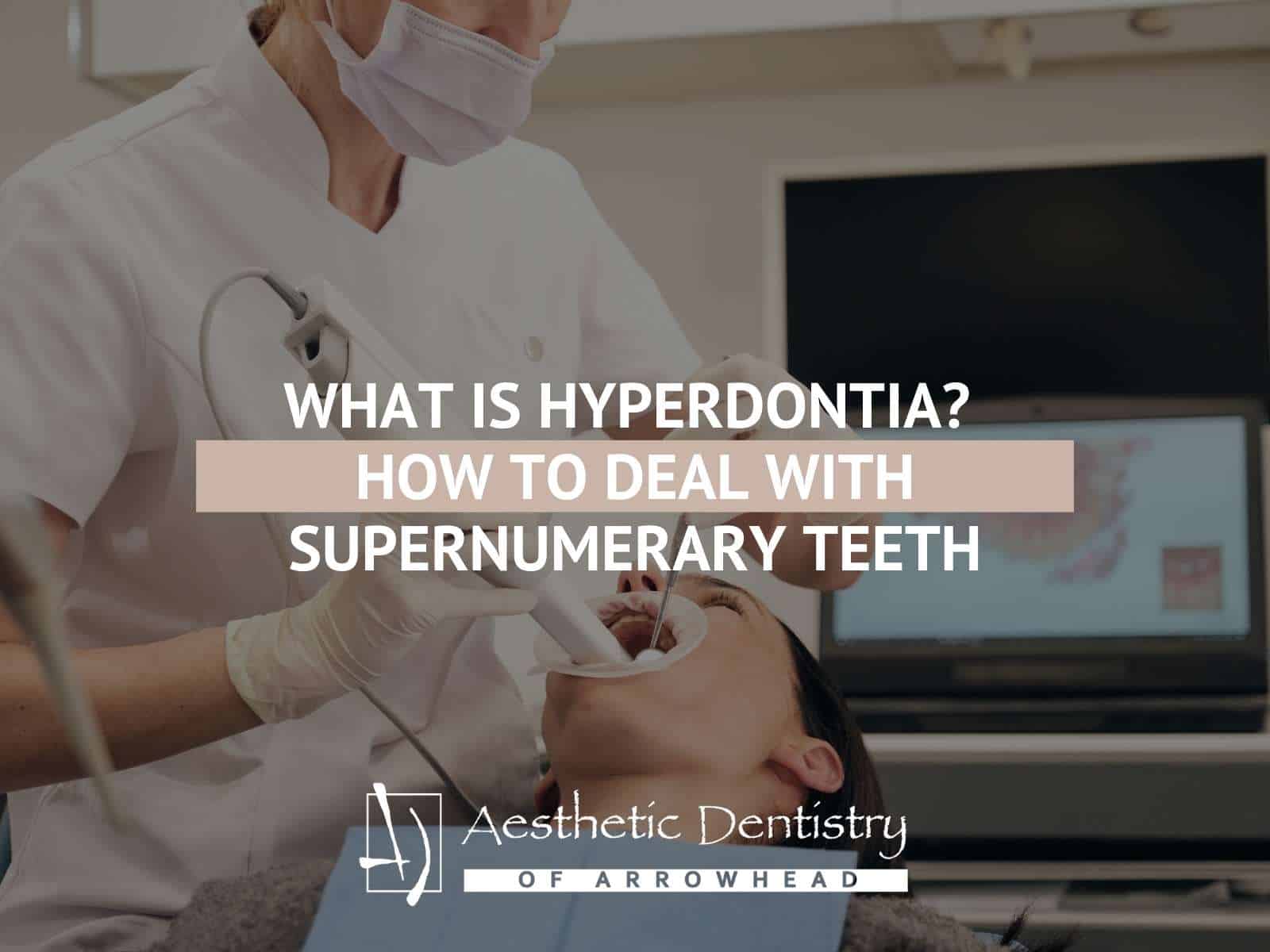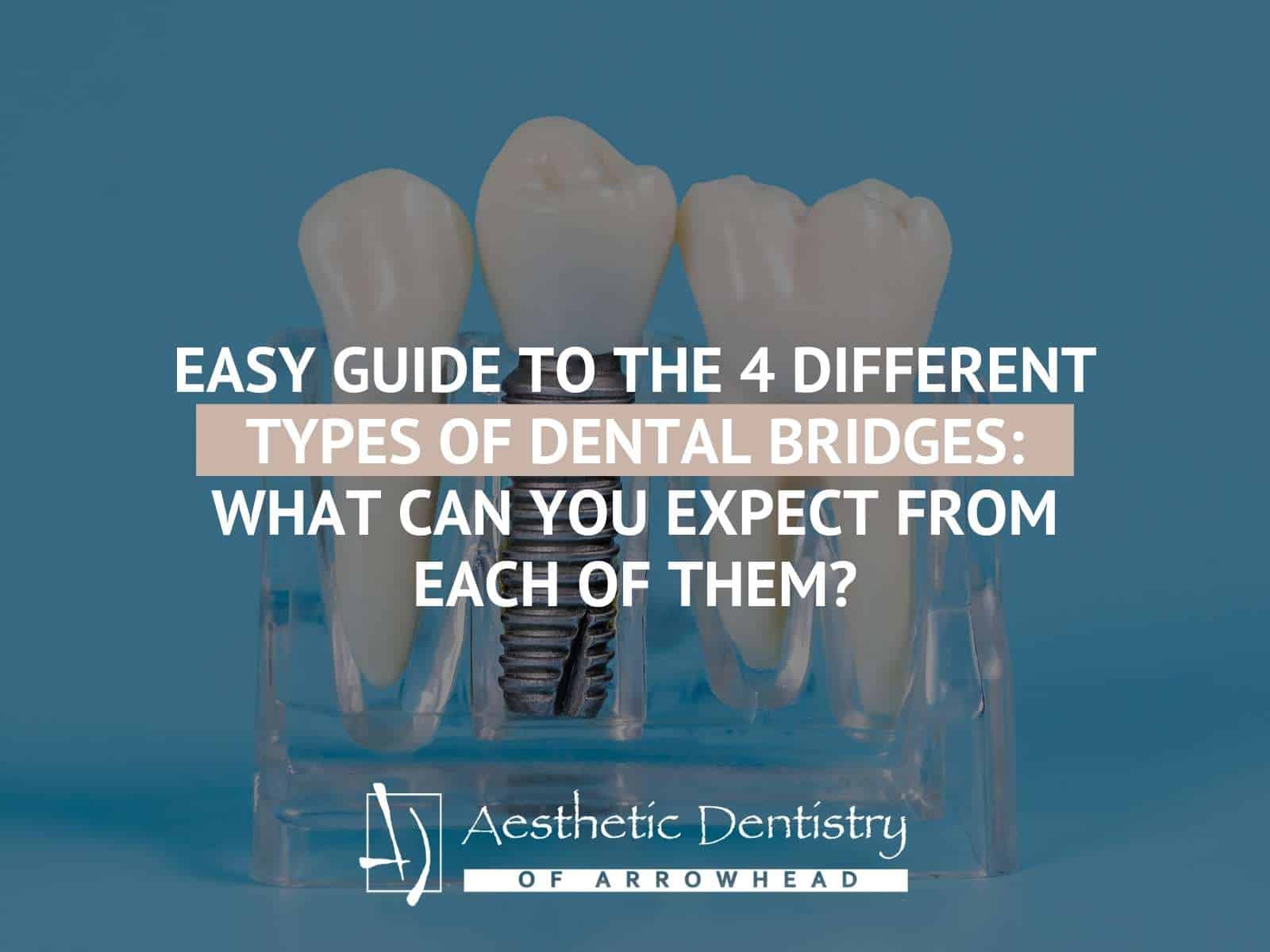When Are Inlays Your Best Option For Tooth Restoration?
Under What Circumstances Are Dental Inlays Recommended
When you think of tooth restoration, you might picture a crown to cover your damaged tooth. But that’s not the only option. There’s another one that can fix your tooth without risking function and stability.
We’re talking about inlays. Dental inlays can last for decades before needing replacement. However, they’re recommended only in certain circumstances, which we’ll mention in this article so you can have peace of mind before visiting your dentist in Glendale.

What Exactly Is An Inlay?
A dental inlay is a pre-molded filling that goes into your tooth’s grooves. It’s most commonly used to fill cavities (also known as dental caries) in the center of your tooth rather than at the outer margins or “cusps.” Typically, these cavities have not progressed to more extensive tooth decay.
Having a dental inlay placed on your tooth is a fairly painless and simple procedure. Your dentist will use a local anesthetic to numb the injured area of your mouth before drilling into the compromised tooth to remove the decay.
After cleaning the compromised tooth, your dentist will take an imprint of the top crevice area of your tooth and send it to a lab.
Dental inlays are often made of porcelain or composite resin to match the color of your teeth. They offer an almost undetectable dental restoration and are typically more long-lasting than conventional fillings.
The Difference Between An Inlay & An Onlay Or Filling
Now that you know what a dental inlay is, you may think it is quite attractive!
Getting this kind of restorative care may be the best option if you have slight tooth decay, a fracture, or another dental injury. However, your dentist may recommend other dental repair techniques depending on the type of damage.
A dental onlay, for example, is used to restore a tooth with more severe damage that has progressed to the cusp or biting surface. An inlay is typically used to fill a cavity in the grooves of your tooth, whereas an onlay covers the higher points around your tooth’s edges.
A dental onlay is created in the same way as an inlay. The dentist will use a local anesthetic to numb the affected area. Then, the dentist will drill your tooth to remove any decayed or damaged tooth material. After that, the dentist will fill the cavity or damaged area with a temporary dental onlay.
The process ends with an impression that should be sent to a lab, just like with an inlay. Your permanent onlay will be delivered a week or so later, and your dentist will place it in your tooth.
And what about dental fillings? You’ve probably heard of this dental procedure and may even have one! Fillings are made from a variety of materials and are used to fill in a small area of your tooth where an Glendale dentist has cleaned out a cavity.
They range from the more common amalgam, which is a combination of metals, to glass and acrylic resin composite. Traditional fillings are not so common nowadays because they tend to weaken the tooth over time.
Fillings have the advantages of only requiring one dental visit, being less expensive, and being suitable for minor cavities, while inlays and outlays are for more extensive damaged regions. Consider inlays and outlays as a step between crowns and fillings.
The Right Time To Use An Inlay
Damage can happen even if you keep a strict oral hygiene routine and regularly visit your dentist for exams. If your biting surface meets the following characteristics, your dentist may suggest an inlay:
- Decayed or broken teeth that do not damage your tooth’s cusps.
- Extensive damage
- The injury level doesn’t leave enough tooth material to use a dental crown.
Inlay Care After Surgery
The first 48 hours following the treatment are crucial for your inlay to have long-lasting effects.
Avoid sticky or hard foods and high-temperature drinks or foods. Stick to soft nutrition for a few days so you can offer your tongue a little break. Remember to follow all the recommendations your Arizona dentist gives.
For a day or two following your surgery, you can feel numb or sore. Don’t be afraid to resume your normal dental health routine after this passes.
All three inlays, onlays, and fillings are effective restorative techniques, so you should discuss which one is best for you with your dentist. Getting an inlay may be right for you because of the materials’ strength and durability, as well as how this procedure promotes a longer lifespan for your teeth. Nonetheless, always talk to your dentist first.
Arizona’s Top-Rated Dentist For You
It’s not enough to understand the differences between inlays, onlays, and fillings. You need to talk to a trusted dentist in Arizona to understand how these process work and which are better for you.
That’s why we remind you to contact Aesthetic Dentistry of Arrowhead, a top-rated dental clinic in Arizona that offers high-quality dental services to improve your smile and dental health. Contact us now to schedule an appointment soon.

Dr. Greg Ceyhan – Aesthetic Dentistry of Arrowhead
Glendale, Arizona 85308
Map | Directions
Phone: (623) 979-1515
Fax: (623) 878-1811
Office Hours: Monday-Friday: 8am-5pm
Website: https://www.drgregceyhan.com


